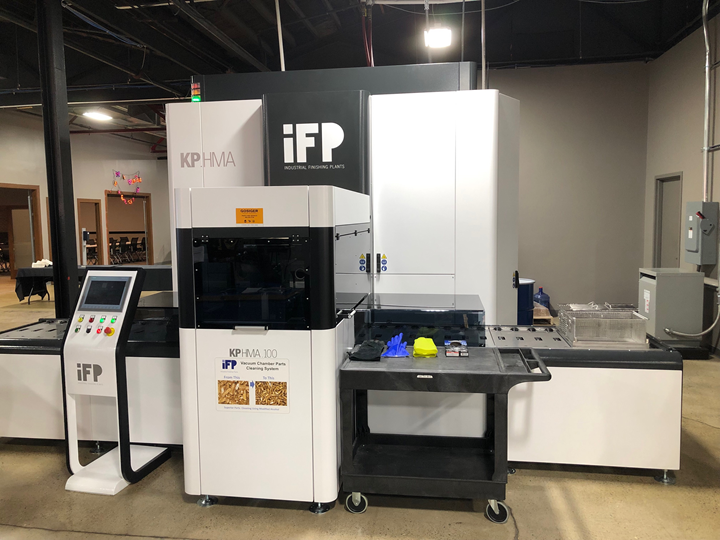By utilizing ultrasonics, small, intricate features on parts can become completely clean. Photo Credits: Gosiger High Volume
Machined metal parts that use cutting oil during the machining process can be more difficult to clean than water-soluble coolants. Therefore, implementing the most effective parts washer for this job is critical for achieving quality and sustainability within a cleaning process.
Using degreasing equipment, which supports oil-based solvents, is recommended for this type of cleaning application. And, if machining complex parts, vacuum parts washing is especially useful.
Featured Content
Break Down Oil With Solvents
Manual degreasers, vapor degreasers and vacuum parts washers are the most common types of solvent parts washers found on a shop floor. All types have their place, so it is recommended to consult a cleaning equipment company prior to making an equipment investment.
- Manual Degreasers. Although manual parts washing can appear outdated, there are certain applications that deem it necessary. However, this is a tedious, labor-intensive option. Manual degreasers are wash stations for low volumes where operators clean each part in a solvent by soaking, brushing, heating and fluid agitation.
- Vapor Degreasers. Conventional vapor degreasers are “open atmosphere” systems in which parts are suspended above solvent vapor and/or immersed in the solvent. The chemicals in the solvent clean metal pieces by dissolving the soils on the parts. Cooling coils condense the vaporized solvent for return to the solvent tank.
- Vacuum Parts Washers. Vacuum parts washers such as iFP parts washers distributed by Gosiger High Volume are fully self-contained, airtight cleaning systems, performing all washing and drying under vacuum while ensuring high environmental and cleanliness standards. These parts washers can eliminate the use of water and all the related support equipment, consumable chemistry, monitoring, mixing and disposal, offering an efficient parts cleaning option.
Cleaning Parts With Challenging Geometries
Challenging parts can prevent the solvent from flushing hard-to-reach areas in the part, such as blind or tapped holes, leaving contaminants behind. Ultrasonic technology found in vacuum parts washers such as iFPs thoroughly clean stubborn areas of a part where this contamination often lingers.
Manual parts washing of complex geometries, unlike ultrasonic cleaning, can prove inefficacious because an operator may be ill-equipped to handle a particular part shape. The more challenging a part, the longer it will likely take to clean it.
The iFP KP.HMA parts washer satisfies high productivity demands and large quantities of contaminants for precision small parts.
However, ultrasonic technology uses transducers to generate vibrations in the liquids containing immersed parts. These vibrations act as a scrub brush, reaching the surface of any crevice or hole and breaking up even tougher soils.
Further, iFP machines operate under vacuum, which removes air bubbles that may trap soils and protect them from being purged from the part. These machines constantly recycle solvent and enable the complete cleaning of any part faster than other degreasing equipment, with cycle times averaging 8 to 15 minutes.
Avoid Hazardous Chemistry
There is parts cleaning equipment out there that uses toxic chemicals, such as trichloroethylene (TCE), which can be hazardous to humans and therefore require extra safety measures around them. It is worth considering a greener alternative to these chemicals, such as the biodegradable modified alcohol used in iFP systems.
iFP/Gosiger High Volume | gosiger.com/ifp
RELATED CONTENT
-
Register Now! Parts Cleaning Conference 2023 Focuses on Solvent Replacement and More
Attend this year’s conference at PMTS 2023! This one-day conference on April 19 will expand your knowledge and your industry contact list.
-
Complete Cleaning/Drying of EV Battery Trays
This parts washer specifically developed to clean and dry EV battery trays has a processing time of less than 100 seconds per part and processes two battery trays per cycle.
-
5 Grinding Considerations for Improving Surface Finish
Improving surface finish can be done by making adjustments to one or more of these points: operational parameters, wheel dressing, grit size, coolant delivery and machine condition.








